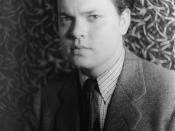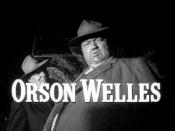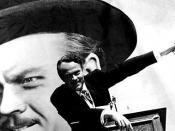"What is the best film made in 1940s?" has always been film critics concerns and I believe that question cannot be decisively answered. It is known that during that period of time, many films have been made, but few films are considered true candidates for that question. One of them is The Third Man, 1949, a British film noir directed by Carol Reed.
The Third Man cleverly uses relatively obscure and now almost forgotten details of that time period in Europe. The setting is post WW2 Vienna, picturesque capital of ancient and mighty Austrian Empire. The empire is long gone, and Austria reduced to small country, carved up into occupation zones by victorious Allies. The population of the bombed out capital is enduring unimaginable economic hardships and many of once proud citizens are forced to earn for a living through the thriving black market.
To this city comes Holly Martins, American writer of cheap pulp westerns, who has been invited to the city by his old college friend Harry Lime. Martins is alcoholic and broke, and writing about Lime's medical charity operation could help him to start his career all over again. However, soon upon the arrival, he is greeted with the shocking news of Harry's death in automobile accident. To make things even more puzzling, Major Calloway tells him that Harry happened to be one of the worst black market fraudsters in town. Disbelieving and against Calloway's wishes, Holly decides to stay in Vienna and try to clear his friend's name. In the process he meets Anna Schmidt, actress and Harry's mistress. Soon, details about Harry's illegal activities with fake penicillin emerge, as well as contradictory details about his death. Holly becomes convinced that his friend was murdered, but the real truth is even more shocking.


